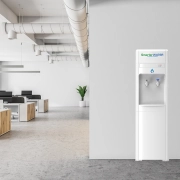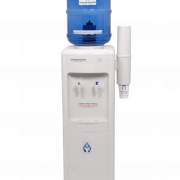Introduction
With the rise of health awareness, the concern for drinking water’s purity and safety has become a topic of significant importance. It’s commonplace to see water coolers installed in various public and private places, providing a convenient hydration source. However, myths and misconceptions surrounding water cooler safety persist. This article aims to debunk these myths, providing clear and accurate information on water cooler safety.
The Importance of Water Coolers
Water coolers have evolved significantly since their invention in the early 1900s. They serve a vital role, especially in offices, schools, gyms, and other public areas, offering a readily available water source to keep people hydrated. Ensuring this water is safe to drink is paramount to public health.
Common Myths Surrounding Water Coolers
Numerous misconceptions surround the use of water coolers, from their maintenance and cost to their impact on the environment and workplace compliance. Each of these myths deserves a thorough examination to provide an informed perspective.
1. Water coolers are breeding grounds for bacteria
The concern that water coolers are a breeding ground for bacteria stems from the potential for stagnation in improperly maintained units. However, most modern coolers are equipped with advanced filtration systems and self-cleaning technology. Regular maintenance and cleaning can further ensure that the water remains safe and hygienic.
2. Water from water coolers is not as pure as bottled water
This myth operates on the assumption that bottled water is invariably purer than water from coolers. In reality, the purity of water depends on its source and the purification methods employed. Many water coolers use advanced filtration systems that can effectively remove impurities, making the water as pure, if not purer, than most bottled water.
3. Water coolers are wasteful and environmentally unfriendly
Compared to the manufacturing and disposal of single-use plastic bottles, water coolers are a more sustainable choice. They cut down on plastic waste and reduce the carbon emissions associated with producing and transporting bottled water.
4. All water coolers are created equal
Just like any other product, water coolers come in a wide variety of types and models, each with its unique features and functionalities. The quality of a water cooler depends on its design, materials, and filtration technology. Hence, it’s incorrect to believe that all water coolers provide the same quality of water or service.
5. Water coolers only chill water
While the term ‘water cooler’ may suggest that these units solely provide cold water, most models actually have multiple temperature options. They often come equipped with both chilling and heating elements, allowing you to enjoy cold water for refreshing beverages and hot water for teas, soups, or other needs.
6. Water coolers have no impact on workplace compliance
Workplace compliance involves providing employees with a safe and healthy environment, which includes access to clean drinking water. In this context, water coolers can be a key factor in ensuring an organisation meets its health and safety obligations.
7. Water coolers have to be kept indoors
While water coolers are commonly found indoors, they are not exclusively designed for indoor use. There are outdoor models built to withstand various weather conditions, offering a convenient water source for outdoor spaces like parks or sports facilities.
8. Water coolers are expensive
The cost of a water cooler can vary greatly depending on its features, capacity, and the technology it employs. While some high-end models might be expensive, there are also many affordable options available. When compared to the cost of consistently buying bottled water, a water cooler can be a cost-effective investment in the long run.
9. Water coolers aren’t sustainable
Water coolers are in fact a more sustainable option than bottled water. They help reduce plastic waste and energy consumption associated with producing and transporting bottled water. Moreover, many water cooler models are designed with energy-saving features to further reduce their environmental impact.
10. Water coolers are too big and bulky
While there are large water cooler models, many compact options are suitable for small spaces. Modern designs focus on efficiency and space-saving, allowing for a variety of sizes and styles to suit different environments.
11. They require a lot of maintenance
The level of maintenance required for a water cooler depends on its model and usage. Many modern coolers come with self-cleaning features, and basic care often involves simple steps like regular cleaning and timely filter changes.
12. They use harsh chemicals that are bad for you
Contrary to this myth, water coolers do not rely on harsh chemicals to purify water. They typically use physical filtration methods, and any cleaning solutions used for maintenance are designed to be safe and non-toxic.
13. They are only for large offices
Water coolers come in a range of sizes and capacities to cater to different needs. While they are a common sight in large offices, smaller models are perfectly suitable for small offices, homes, and even individual rooms.
In debunking these myths, it becomes clear that water coolers, when chosen wisely and maintained correctly, can be a safe, cost-effective, and sustainable solution for providing clean drinking water.
The Reality of Water Cooler Safety
Water cooler safety is a matter of following general safety standards, proper and regular cleaning and servicing, and understanding the impact of maintenance and cleaning on water cooler safety. Regular cleaning schedules and quality maintenance are essential in ensuring water coolers provide safe and pure drinking water.
Tips for Safe and Hygienic Use of Water Coolers
Proper usage and maintenance of water coolers involve several steps and practices. This includes regular cleaning, following recommended cleaning schedules and techniques, and knowing what to look for when buying or renting a water cooler. These practices ensure water coolers provide safe and clean water consistently.
Conclusion
In conclusion, while myths about water coolers abound, the reality is far removed from these misconceptions. With proper care and maintenance, water coolers can provide a safe, environmentally friendly, and convenient hydration solution. Debunking these myths is crucial to enabling users to make informed decisions and ensure their health and well-being.
This article gives a concise, researched perspective on water cooler safety. Each myth is examined and debunked, providing a clearer picture of the reality surrounding water coolers.
1. How often should I clean my water cooler?
This largely depends on the model and frequency of use, but as a general rule, it’s advisable to clean your water cooler every 6 to 12 weeks. Always follow the manufacturer’s instructions for the best practice.
2. Is the water from my cooler as clean as bottled water?
With a good quality water cooler and a proper maintenance schedule, the water from your cooler can be as clean, if not cleaner than bottled water. This is due to the filtration systems installed in many modern coolers, which effectively remove impurities.
3. Are water coolers environmentally friendly?
Yes, water coolers can be a more environmentally friendly choice compared to bottled water. They help reduce the production and disposal of single-use plastic bottles and lower carbon emissions related to the manufacture and transport of bottled water.
4. Do water coolers use harmful chemicals to purify water?
No, water coolers typically use physical filtration methods to purify water. Any cleaning solutions used in maintenance are designed to be safe and non-toxic. Always follow manufacturer guidelines when cleaning your water cooler.
5. Are water coolers suitable for small offices or homes?
Absolutely! Water coolers come in a variety of sizes and capacities, and there are many compact models suitable for smaller offices or domestic settings.
6. Are water coolers expensive to maintain?
The cost of maintaining a water cooler can vary depending on the model, but in general, these costs are not high. Basic maintenance usually involves regular cleaning and periodic filter changes. Compared to the cost of consistently buying bottled water, a water cooler can be a cost-effective choice.











